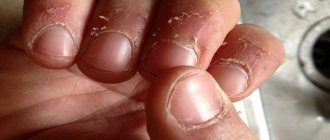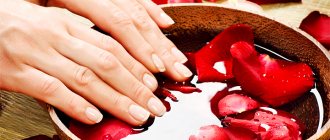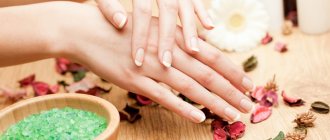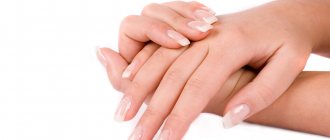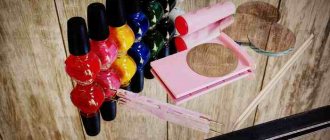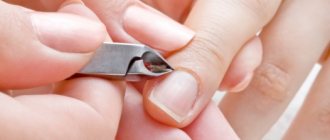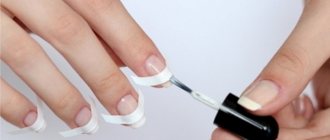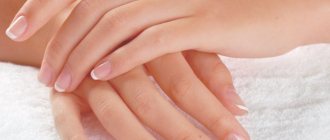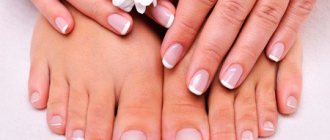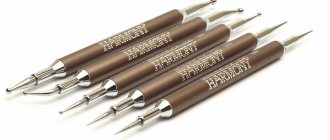There are many ways to keep your nails in good condition. Particular attention should be paid to the cuticle - this is a very delicate area that requires careful handling and careful treatment. It is removed using a remover, scissors, nail file or nippers. Another useful tool that makes care much easier is a pumice stone for removing cuticles. Due to the ease of working with it, pumice can become an indispensable tool for home manicure.
What kind of instrument is this?
Europumice is a ceramic file-bar, which is most often made from a compressed mixture of aluminum and porcelain. It has a pointed tip, which significantly increases the efficiency of work and simplifies it. In this case, there is no damage to the cuticle, since the surface of the pumice is quite smooth and soft. You can find different types of pumice stones on sale. The toughest of them is yellow, pink is a little softer, and the most gentle version of the tool is gray.
Learning to use pumice is not difficult. Just a few practice sessions and you will be able to operate this tool with ease. From the moment this happens, manicure will turn into an easy and enjoyable experience for you. Europemza perfectly copes with defects such as cracks or burrs around the nail, which can arise as a result of improper hand care or poorly performed trimming manicure. The convenient shape of the tool and the fine-grained surface gently eliminate all visible defects, align and smooth the skin around the nails.
Hemostatic pencil
Manicure is not only the decoration of nails, but also complete hand care. Putting your nails in order using a trim manicure is often fraught with the appearance of small wounds and cuts - in this case, you cannot do without a hemostatic pencil. It belongs to the hemostatic agents for local use - when there is a cut, you just need to apply a pencil moistened with water to the wound, and in a matter of seconds the bleeding will stop. The pencil instantly creates an airtight membrane around the wound, preventing the entry of germs and dirt, has an anti-inflammatory effect, stimulates blood clotting and promotes rapid healing. Stopping the blood occurs thanks to the active substance aluminum sulfate, which, when applied, causes a narrowing of blood vessels.
38RZ Hemostatic pencil
A hemostatic pencil is an indispensable and very convenient tool for quickly stopping bleeding, especially convenient for individual use. So, if you prefer to do your own manicure at home, this attribute will not be out of place in your cosmetic bag.
When using a pencil, it is important not to forget that after each use it must be rinsed and dried, then it will last a long time and effectively.
Step-by-step instructions for working with pumice
Using a pumice stone is quite simple - even a girl who has never done a manicure on her own can easily handle it. To perform a high-quality unedged manicure, you will need hand and nail oil, a cuticle growth retardant, and a pumice stone.
- Manicures should be performed on dry skin. First, treat the cuticle area, carefully grinding it down with gentle movements. The pumice stone should not put strong pressure on the skin. You need to place it perpendicular to the nail with the pointed side. Work the side rollers with quick movements, keeping the pumice stone parallel to the skin. In the area of the burr, movements should go strictly from the center to the edge. Try not to touch the nail plate so as not to injure it .
- At the second stage of the manicure, pumice stone will be needed to remove all hard areas around the nail. They are especially pronounced in the very corners.
- Europemza is a universal tool. It can be used not only for cuticles, but also for filing the free edge of the nails. Give them the necessary shape, bring it to perfection.
- In the next stages it is better to use a manicure buffer. To make your nails look perfect, you need to sand and polish them to a shine, correcting any imperfections that were left untouched by the pumice stone.
- Apply any product to slow down cuticle growth on the skin around the nail.
- At the end of your manicure, no matter how you do it, be sure to soften your skin with nourishing oil or cream.
As you can see, using pumice is very simple. This is a great tool for treating even rough cuticles. It is very important to get a clear understanding of how to work with each new tool, so we invite you to watch a detailed training video.
Mode of application
Usually, pumice is slightly moistened before use, so it moves softer and smoother without injuring adjacent tissues. But, if you have certain skills, then you can use it “dry”.
Before processing, you need to wash your hands well and disinfect the instruments that will be used during the procedure. It is good to treat wet fingers with a scrub, as it softens the skin and removes hangnails. Small leathery growths can be easily removed with this product; there is no need to use pliers.
- At the beginning of the procedure, you need to make a hand bath to steam the skin and soften it. It is advisable to add a softening composition and flavorings to the water. If there is no special product, then you can use what you have on hand. For example, for 1.5 liters of water you will need 2-3 slices of lemon, 1 tbsp. l. sea salt, 5-6 drops of olive or other base oil.
- Using a special stick (often supplied with pumice), the cuticle needs to be pushed back to the base.
- Then you need to carefully treat the cuticle with pumice. If cream is used, rub it in in a circular motion. If a stone is used, then you need to move in one direction. In this case, the European stone will move like an eraser, as if erasing the cuticle like an inscription.
- If there are burrs, they need to be removed using scissors or tweezers.
- Hands should be washed after the procedure to remove any remaining dead skin and pumice chips.
- Then we treat them with nourishing cream. You can use special ointments to soften the cuticle and oils to slow down its growth.
To carry out the procedure, you need to use pumice with small cells (fine abrasive). This will avoid damage to healthy tissue.
A good soothing remedy after treating the cuticle is nourishing wax. You can buy it in a store or make it yourself. To do this, melt 20 g of beeswax in a water bath and add a drop of liquid vitamins A and E. Carefully move the mixture. Nourishing cuticle wax is ready.
Some useful tips
If you decide to switch to an unedged manicure using European pumice, then a few useful tips will help you process the cuticle area faster and better.
- We looked at performing a manicure on dry skin. But if you haven’t had a manicure for a long time, and your cuticles are in disrepair, then it is still recommended to steam your hands for just a few minutes in a warm bath. This will help soften rough skin and then remove it faster.
- Before the bath, it will be useful to add one more procedure - applying a remover. This is a special softening cuticle remover that literally dissolves dead skin cells, making manicure much easier. Also, do not forget to go over the cuticle area with a pusher and a hatchet, pushing it back and removing the pterygium.
- Choose the hardness of pumice depending on the characteristics of your cuticle. If your problem is rough and grows very quickly, then give preference to the yellow tool. For soft and thin cuticles, gray pumice is more suitable. Pink is an option that can be used in both cases.
- Don't forget to use a cuticle growth retardant. It can be anything - oil, a special pencil or cream.
Pumice and our useful tips will help you always keep your hands and nails in perfect condition. However, besides pumice, there are many more very useful, necessary and convenient tools for manicure. If you are just starting to master the art of caring for your nails, then we invite you to watch a very interesting and useful video in which you will find an overview of various manicure tools. All of them can be simply irreplaceable if you are inclined to perform a manicure at home.
Which europeum powder is best to choose for the cuticle: user reviews
Who needs pumice for cuticles? Anyone who does not want to waste time or money on going to nail salons, who has thick, fast-growing or rough cuticles. But which pumice is better to choose?
On Russian review sites, such as Irecommend, there are positive reviews about CND pumice for European manicure.
Recommended Use:
- Remove nail polish; nails must be clean and dry before applying cuticle polish.
- Using an orange stick, push back the cuticle.
- Using a pumice stone, gently exfoliate excess skin from cuticles. Each finger takes about 5 minutes to treat.
- Wash the hands.
CND's pumice stone is very ergonomic and gentle enough to remove excess cuticle without damaging the nail or surrounding skin. For this, users give her “five stars” out of five.
There is another pumice stone for cuticles, reviews of which are mostly positive. This time it is a Chinese Stone Nail Files Cuticle Remover, which is offered on the Aliexpress online auction (5 pieces in the lot). These files have a convenient size (10 cm) and a low price.
On the American Amazon auction there are rave reviews about a product called YCC Stone Eraser Cuticle Remover.
- One of the users tried this European cuticle polish not for a manicure, but for a pedicure and boasted that her toes began to look like she had been to a beauty salon.
- Another review talks about both the advantages and disadvantages of the file. You will have to spend a lot of time to completely clean the cuticle and get a smooth nail surface. In addition, the file has sharp, not rounded edges, so you need to act very carefully so as not to injure your fingers.
We recommend: Gel polish under the cuticle: application features and benefits
And so that after an unedged manicure with pumice the cuticle always looks perfect, you need to lubricate it regularly (several times a day).
- For any contact with water, you should wear gloves to protect the skin of your hands. And if you don’t have gloves, don’t forget to smear your hands with cream after water procedures.
- Even an overgrown cuticle should not be cut, only gently pushed away with an orange stick. Remember that the cuticle is a protective barrier for your nails.
Wooden manicure sticks
When carrying out the unedged manicure procedure, you cannot do without wooden sticks. The first of them were made from orange wood, hence the name “orange sticks,” although today they are made from different types of wood. The stick is an indispensable assistant when processing nails: it allows you to carefully and accurately push back the cuticle and clean the inside of the free edge of the nail. It is used as an auxiliary tool when decorating the nail plate: for sticking tips, creating forms from gel and acrylic, for painting.
It is necessary to push back the cuticle with a stick after the softening procedure with gel or oil. It is better to do this with the blunt end of a stick so as not to damage the nail. The pointed end can be used to remove excess skin.
Some manufacturers make sticks with abrasive tips that can be used to remove dry, rough skin.
orange stick
Dust brushes
For a high-quality manicure, both every girl’s home kit and a professional master’s kit should have a nail brush. More often, this attribute is used to clean nails after filing during extensions. But in fact, the scope of application of the brush is much wider. Soft bristles easily and quickly remove particles of dust and dirt from the most inaccessible places around the nail plate, which allows you to create a high-quality manicure and simplifies the procedure. Brushes with stiff bristles are used for mechanical removal of the cuticle, after steaming or softening it with special means. When polishing nails with wax, it is recommended to use a brush to improve the quality and effectiveness of the procedure: this way the product is distributed evenly over the nail plate and covers the smallest irregularities and cracks. As you can see, a manicure brush is a multifunctional tool that will be useful in many procedures and does not injure the nails and skin of the hands.
When choosing a high-quality and reliable nail brush, you need to focus on some criteria.
Pay attention to the shape of the handle: to clean nails or remove cuticles, it is better to use a brush with a closed or rounded handle - it sits firmly in your hand and does not slip; For brushing off dust from the nail plate, a brush with a long straight handle is more convenient.
An important criterion is the shape of the working surface of the brush. Round ones are used to treat individual nails or to remove dust. Rectangular ones allow you to grab several nails at once.
Round dust brush
Round dust brush
Medium dust brush
Depending on the purpose of the brush, it is important to consider the stiffness and material of the bristles. Hard bristles are suitable for cleaning and polishing nails, and soft bristles are suitable for removing dust. Of course, the best material is natural bristle, as it does not scratch the nail plate. Among modern artificial materials there are also good enough, soft and thin ones that do not damage the nail.
Thanks to the use of a brush at the preparatory stage of manicure, your nails will look neat and well-groomed.
My helpers for unedged manicure
I would like to show you my assistants, without whom my unedged manicure and nail care are indispensable. I hope you find it interesting! And so, without further ado, let's move on to the review...
I will show you in the order in which I do my manicure. First, these are my favorite nail files and buffs:
This file is the lowest abrasive fox file EzFlow Gray Fox 180. It is very convenient for me to file the side ridges, as well as remove the length and shape the shape of the nails.
The next shark is EzFlow Sand Sark ll with abrasiveness 240\280. I use this assistant to go over the end of the nail to delicately remove all the unevenness and traces of sawing after the rough work of the Gray Fox. Next is the EzFlow Snow Monkey polishing buff. Its inner side is made of a very soft and delicate material, very similar to natural suede. This buff perfectly polishes the nail plate and the end of the nail. Your nails become very smooth and shiny! It is also perfect for sealing nails with wax.
Next, my favorite polishing buff from CND. This is what I use most often. Its only drawback is that it very quickly loses its presentation and quickly breaks down. I think you can see it in the photo. So it wore out in just a couple of months.
Well, the last one is a polishing block for the side rollers. I somehow didn’t have a very good relationship with him. Firstly, it doesn’t fit well in the hand, and secondly, when polishing the side ridges, it roughly touches the side end of the nail, which can lead to deep scratches, but I don’t need that.
Go ahead. Next in line are removers. My main and favorite is Cuticle Eliminator.
If anyone is interested, here is its composition
The remover has no odor, it looks like a transparent, slightly thick transparent liquid, for some reason with a lot of air bubbles. I apply it to the entire cuticle (but the nails must be painted, otherwise the nails may peel!!!), hold it for half a minute and carefully clean everything off with an orange stick. The remover copes with its task simply with a bang!
The second remover, softer and more gentle, is Apple Cuticle Remover from Cuccio. I would even call it a daily care product. It consists of fruit acids and oils.
compound:
It looks like a white cream with a light, unobtrusive aroma. I use it every day, apply it to the cuticle, wait a minute (during this time it begins to melt slightly and release oils), then I use an orange stick to slightly push back the cuticle and clean it up if there is anything. I remove the excess with a napkin. Well, orange sticks... I have them like this... quite convenient
Aren't you tired? Let's move on... The next ones are skin care cream and cuticle oil. These are the representatives in my arsenal.
The first is cuticle oil from Smart Enamel.
I have been using it for a long time and I am quite satisfied with its qualities. The oil is liquid, transparent yellowish in color. It has practically no smell. Its only problem is that it takes a long time to absorb and leaves marks immediately after application.
Next up is a cuticle care cream from Orly.
here is its composition, if anyone is interested. It looks like a thick cream with a light cream color. Its biggest disadvantage is the terrible smell. But after using it for a long time, I got used to it. I cannot call this cream ideal for skin care. I used 1 tube, I don’t think I will buy a second one. I noticed a greater effect from everyday use of the Cuccio remover than from this cream.
Also, I would like to share with you my little discovery. There was a time when I ran out of cuticle oil and then the “Rescuer” balm caught my eye. After reading its composition, I decided to try it temporarily instead of oil.
This is its composition: ghee, olive oil, calendula oil extract, purified turpentine oil, beeswax, sea buckthorn oil, refined naftalan oil, vitamin E, A, essential oils of tea tree, rose, lavender. The effect after using it was no worse than after using Smart Enamel oil.
Its consistency is not thick, but it does not spread either. The color is yellowish, the smell of essential oils is quite pleasant. The only negative, like the oil from Smart Enamel, is that it takes a long time to absorb and leaves even more traces. You have to wipe your hands with a napkin after use. But for me personally, these qualities are not critical!
Next up is nail polish remover.
This Turkish remedy contains acetone. The bottle has a pump, which is very convenient for me. The acetone content does not bother me; I add a bottle of regular pharmacy (can be vegetable) glycerin to it, and it is known to have moisture-retaining properties and thus does not dry out the cuticle. Glycerin forms a film on the skin and nails and thereby prevents acetone from aggressively affecting the skin and at the same time also removes nail polish, i.e. ZhDSL itself does not lose its properties. Glycerin dissolves quickly in ZhDSL. All that remains is to wash your hands with water before painting with varnish. For 450 ml of HDSL I use 25 g of glycerin.
And finally, a photo of my nails.
I also want to demonstrate how my nails and their shape have changed after switching to an unedged manicure. BEFORE
AFTER
OK it's all over Now! I hope I didn’t bore you and was useful! Wishing you beautiful manicures and healthy nails!
Sincerely, your Alena!
Increase
